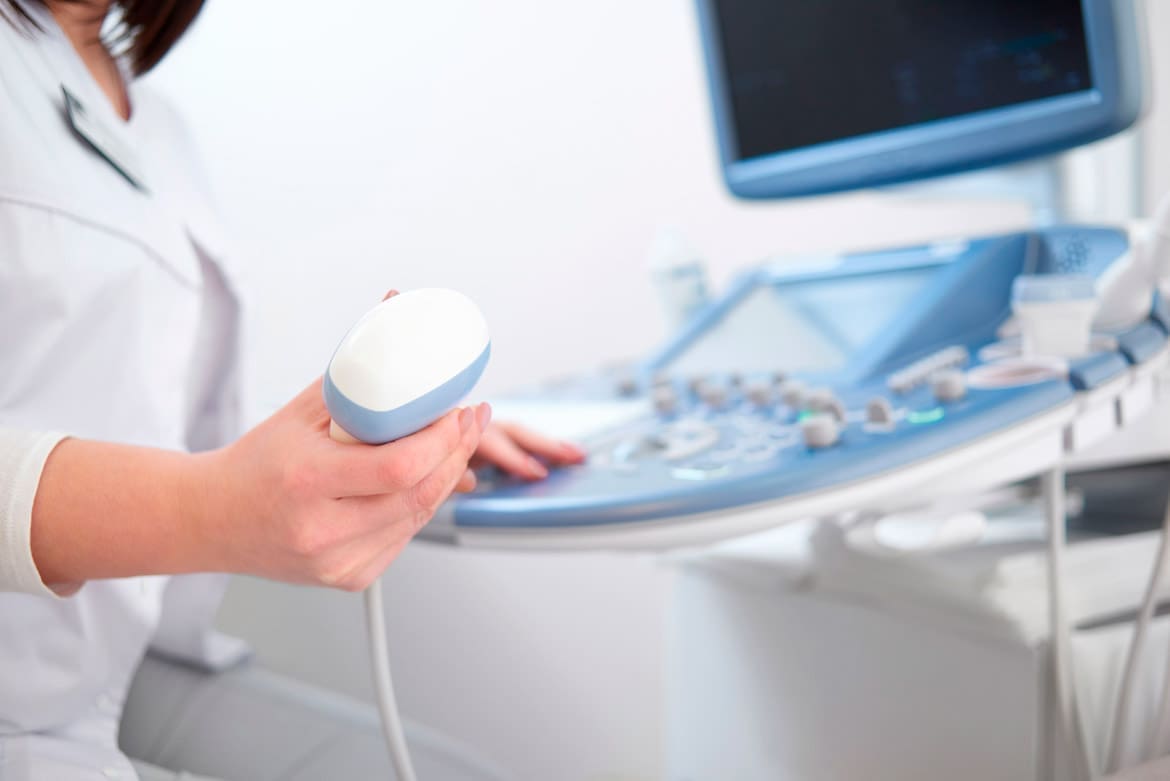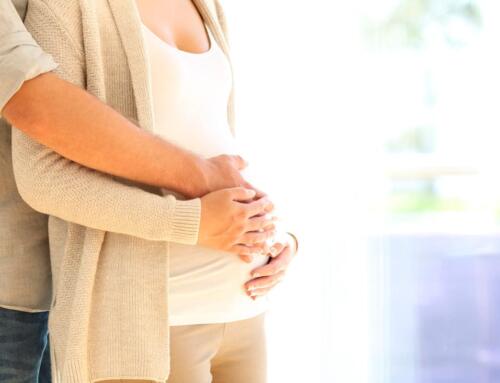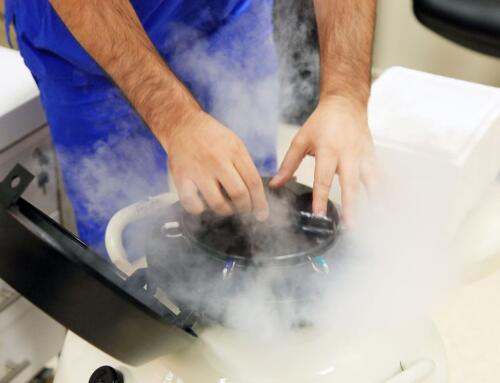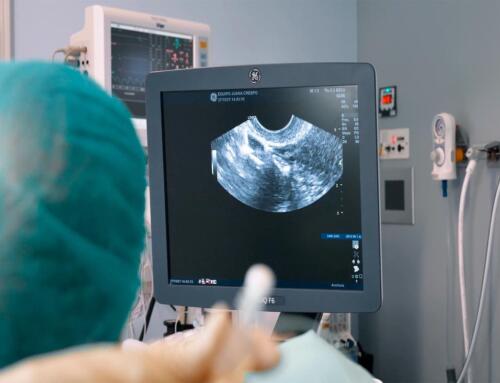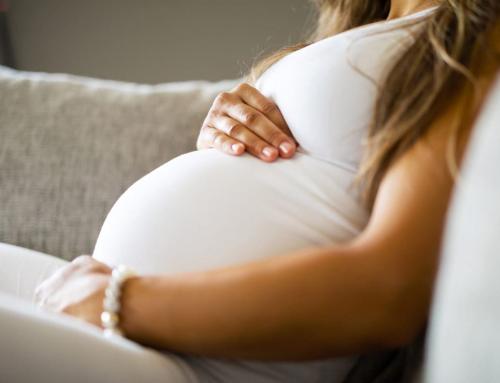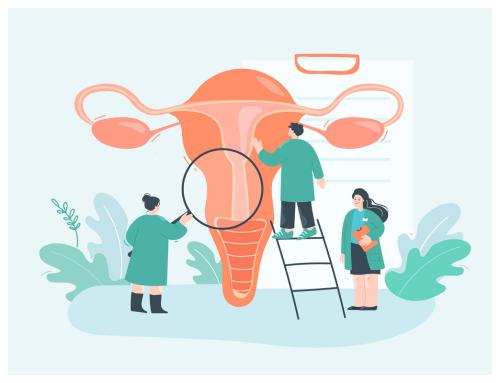The detection of uterine fibroids when we are in the quest for a baby, often raises doubts about whether or not to undergo surgery. It is true that many women with a small fibroid get pregnant easily and problem-free during pregnancy. But in many cases, the existence of uterine fibroids is a fertility problem.
Many patients ask us if fibroids should be surgically removed before IVF; if this surgery will delay assisted reproduction treatment; or if surgery will leave scars that will make pregnancy difficult. To help answer these questions, we have prepared this article on uterine fibroids and pregnancy.
What are uterine fibroids?
Uterine fibroids, also known as fibroids, are one of the most common benign tumors in women. In fact, it is estimated that 20% of women of childbearing age may have fibroids.
Uterine fibroids originate in the muscle cells of the uterus. Fortunately, only a small percentage become malignant. Less than 1% of cases will give rise to a malignant tumor, called a leiomyosarcoma.
The reason why uterine fibroids can be a barrier to pregnancy is because they can affect the uterus in its shape, volume and function. These circumstances can result in the endometrium not meeting the optimal conditions for the embryo to achieve implantation, or in miscarriages in the first weeks of gestation.
What are the most common symptoms of fibroids?
Most uterine fibroids do not cause any symptoms. When clinical manifestations appear, the most frequent symptoms that make it necessary to consult a gynecologist are:
- Very heavy menstrual bleeding, sometimes with blood clots.
- Bleeding between periods.
- Menstruation that may last longer than normal.
- Need to urinate more frequently.
- Cramping or pain during periods.
- Feeling of fullness or some pressure in the lower abdomen.
- Possible discomfort or pain during intercourse.
Types of uterine fibroids according to their location.
Not all fibroids are the same. We can classify them according to their location. And precisely this condition has an influence on the probabilities of getting pregnant or not with a fibroid.
-Subserosal myoma
It is one that is located just under the outer covering of the uterus. This type of fibroid generally grows towards the outside of the uterine cavity, giving a bulging appearance to the uterus. However, it does not impede gestation or childbirth, so it is not usually necessary to remove it.
-Intramural myoma
This type of myoma grows in the muscular wall of the uterus, so it can cause a deformation of the uterus. Approximately 40% of uterine fibroids are of this type and it is not usually directly related to problems in conceiving. When this type of fibroids occupy the entire muscular thickness they are called transmural fibroids.
-Submucosal myoma
The last type of uterine fibroid is the one that is located under the surface of the uterine lining and grows towards the interior of the uterus. This type of myoma affects the uterine endometrium and is usually the most symptomatic and can give mass infertility problems. Fortunately, they only account for 5% of cases of uterine fibroids.
Detection and diagnosis of uterine fibroids
Although a physical examination can check the size, shape and consistency of the uterus, as well as the presence of fibroids, it is always necessary to confirm these findings with imaging tests.
Ultrasound is the most useful method for the diagnosis of uterine fibroids, as it allows us to determine the size and location, as well as many of the possible complications.
It is usually a vaginal ultrasound, but in some cases abdominal ultrasound may be necessary to complete the exploration.
The study can be completed with other imaging tests such as a pelvic and abdominal CT scan to see the adjacent organs and check the possible impact of the myoma on those organs.
A final test that we can ask our patients to undergo is magnetic resonance imaging. This is a more precise imaging technique than ultrasound to detect and locate uterine fibroids, even very small ones. It is a test that is very useful to us when planning surgical intervention.
Is it necessary to remove uterine fibroids to facilitate pregnancy?
As we said, whether or not a fibroid affects reproduction will depend on where it is located and the size it reaches.
In general, it is recommended to remove any myoma that occupies the endometrial cavity or produces an anatomical dysfunction of the uterus, since it can prevent the embryo from lodging and implanting in the endometrium correctly.
The most pathological ones, which no one disputes should be removed, are the submucosal fibroids that affect the endometrial cavity. These are the uterine fibroids that we always advise to remove in Juana Crespo. Since they are located in the endometrium, access is easy through the vagina by hysteroscopy.
Also the myomas that are very large and voluminous (more than 4 cm) or compromise the thickness of the uterus, that is, occupy part of the muscle of the uterus, it is common that we remove them. In this case, we use laparoscopic surgery through an abdominal approach, since it is not possible to reach the fibroid through the vagina.
Treatment for uterine fibroid
As we have just discussed, to perform a myomectomy, which is the removal of a fibroid, we perform a surgical hysteroscopy or laparoscopic surgery.
–Hysteroscopy is a minimally invasive technique that is performed as a day hospital procedure. That is to say, admission is in the morning and discharge is obtained in the afternoon. Recovery is very fast and leaves no scars.
This is the ideal technique to treat submucous myomas that clearly diminish the possibilities of embryo implantation, regardless of their size.
–Laparoscopic myomectomy is the most appropriate technique for subserosal or intramural myomas that reach a large size or affect the uterus. Since they are not lodged in the endometrium, we cannot access them by hysteroscopy, so we have to resort to abdominal surgery. In these cases we use laparoscopic surgery, that is, we introduce a camera through the umbilicus that allows us direct vision of the organs and work with highly sensitive instruments that we introduce with incisions of only 5 mm, which have no aesthetic repercussions.
Reproductive surgery specialists
Both hysteroscopy and laparoscopy are surgical techniques that are not exempt from possible undesirable effects. That is why it is imperative that they are performed by expert gynecological surgeons, since the surgery should not cause adhesions or weakness in the uterine wall.
It is necessary to take special care, and to use a delicate technique in this type of surgical procedure. Postoperative monitoring is also essential to obtain the best results and achieve an optimal uterus to host a healthy pregnancy.
The reproductive surgery that we perform in Juana Crespo not only allows us to restore fertility, but also helps us to improve the results in assisted reproduction treatments.
In Juana Crespo we evaluate all the factors that may cause repeated implantation failures, such as uterine fibroids. To do this, we perform a thorough diagnosis using all available technology such as MRI, hysteroscopy and ultrasound in 3D or 4D.
If you are looking to become pregnant, but you have been diagnosed with uterine fibroids, it is necessary to assess whether this is the cause that is preventing it. Our team of professionals specialized in highly complex cases, together with the use of high precision technology, allow us to restore fertility and increase the probability of a successful IVF treatment. Call us at 961 042 557 or write us at info@juanacrespo.es and book your first visit online or in person.


